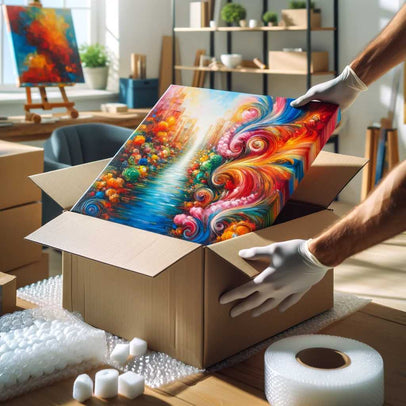Packaging 101: The Complete Guide
- Packaging 101
- Types of Packaging
- Aseptic Packaging
- Blister Packaging
- Biodegradable Packaging
- Bulk Packaging
- Carbon Neutral Packaging
- Circular Packaging
- Clamshell Packaging
- Compostable Packaging
- Cornstarch Packaging
- Corrugated Packaging
- Discreet Packaging
- Ecommerce Packaging
- Flexible Packaging
- Frustration Free Packaging
- Retail Packaging
- Secondary Packaging
- Smart Packaging
- Sustainable Packaging
- What is a PR Package?
- What is a Poly Mailer?
- Packaging Design Ideas
- AI Packaging Design
- Bakery Packaging Ideas
- Bath Bomb Packaging Ideas
- Bath Salt Packaging Ideas
- Body Butter Packaging Ideas
- Body Oil Packaging Ideas
- Body Scrub Packaging Ideas
- Brownie Packaging Ideas
- Cake Packaging Ideas
- Cake Pop Packaging Ideas
- Candle Packaging Ideas
- Candy Packaging Ideas
- Canva Packaging Design
- Chocolate Packaging Ideas
- Cinnamon Roll Packaging Ideas
- Clothing Packaging Ideas
- Coaster Packaging Ideas
- Coffee Bag Design Ideas
- Cookie Packaging Ideas
- Cosmetics Packaging Design
- Cotton Candy Packaging Ideas
- Cupcake Packaging Ideas
- DIY Packaging Ideas
- Dog Treat Packaging Ideas
- Food Packaging Ideas
- Empanada Packaging Ideas
- Etsy Packaging Ideas
- French Fries Packaging Ideas
- Frozen Food Packaging Ideas
- Hair Extension Packaging Ideas
- Handbag Packaging Ideas
- Jewelry Packaging Ideas
- Keychain Packaging Ideas
- Lash Packaging Ideas
- Lip Gloss Packaging Ideas
- Macaron Packaging Ideas
- Minimalist Packaging Ideas
- Mug Packaging Ideas
- New Employee Welcome Kit Ideas
- Packaging Colors
- Packaging Inserts Ideas
- Packaging Logo Design
- Packaging Typography
- Perfume Box Design Ideas
- Pizza Box Design Ideas
- Popcorn Packaging Ideas
- Scarf Packaging Ideas
- Skincare Packaging Design Ideas
- Soap Packaging Ideas
- Sock Packaging Ideas
- Sticker Packaging Ideas
- Sunglass Packaging Ideas
- Sustainable Packaging Ideas
- Tea Packaging Ideas
- Wax Melt Packaging Ideas
- Weed Packaging Ideas
- T-Shirt Packaging Ideas
- Wine Packaging Design Ideas
- What is a Packaging Engineer?
- Types of Packaging Materials
- Chipboard vs Cardboard
- Compostable Packaging Materials
- Alternatives to Plastic Packaging
- Edible Packaging Materials
- Food Packaging Materials
- Are Poly Mailers Recyclable?
- How to Recycle Cardboard Boxes
- How to Recycle Packaging Materials
- Medical Device Packaging Materials
- Mono Material Packaging
- Pharmaceutical Packaging Materials
- Plastic Food Packaging
- Protective Packaging Materials
- Reusing Packaging Materials
- Types of Packaging Foam
- Void Fill Packaging
- What is Chipboard?
- What is Kraft Paper?
- Offset vs Digital Printing
- RGB vs CMYK Printing
- Screen Printing vs Digital Printing
- Screen Printing vs Sublimation
- What is a Dieline in Packaging?
- What is Die Cutting?
- What is Digital Printing?
- What is Flexographic Printing?
- What is Glassine Paper?
- What is Offset Printing?
- What is Spot UV Printing?
- Why is 300 DPI Good for Printing?
- How to Estimate Shipping Costs
- How to Pack Glass for Shipping
- How to Mail a Bubble Mailer
- How to Make a Shipping Label
- How To Measure Box Dimensions and Sizes
- How to Ship Alcohol
- How to Ship Artwork
- How to Ship Books
- How to Ship a Cake
- How to Ship Candles
- How to Ship Clothes
- How to Ship Cookies
- How to Ship Food
- How to Ship a Laptop
- How to Ship a PC
- How to Ship Plants
- How to Ship Shoes
- How to Ship Vinyl Records
- Packaging Symbols
- Shipping Large Items
- What is a Delivery Exception?
- What is Shipping Insurance?

Discover Phillip Akhzar’s journey, the Founder and CEO of Arka, bringing 16 years of expertise in packaging and supply chain logistics. Read more on Arka.
Pre-Shipment Preparations for Shipping Art
Shipping artwork requires thoughtful preparation and knowledge of how to ship artwork safely, ensuring it arrives at its destination in pristine condition. When figuring out how to ship paintings or, understanding the unique requirements of your piece is crucial.
Learning how to ship art prints efficiently can save you time and resources for smaller items like art prints. Special considerations for custom packaging and carrier selection become imperative for larger pieces, such as large paintings. Packaging artwork is an art in itself, requiring packaging materials that protect against impact, moisture, and other potential hazards during transit.
Determining how much it costs to ship a painting is also essential. This cost can vary widely depending on the piece's size, value, and destination. Therefore, researching and comparing shipping options is vital to finding the best balance between cost, speed, and safety.
Lastly, don't overlook the importance of proper documentation. This includes the shipping art label tracking information and any customs forms for international shipments. Ensuring all paperwork is complete and accurate can prevent delays and complications.
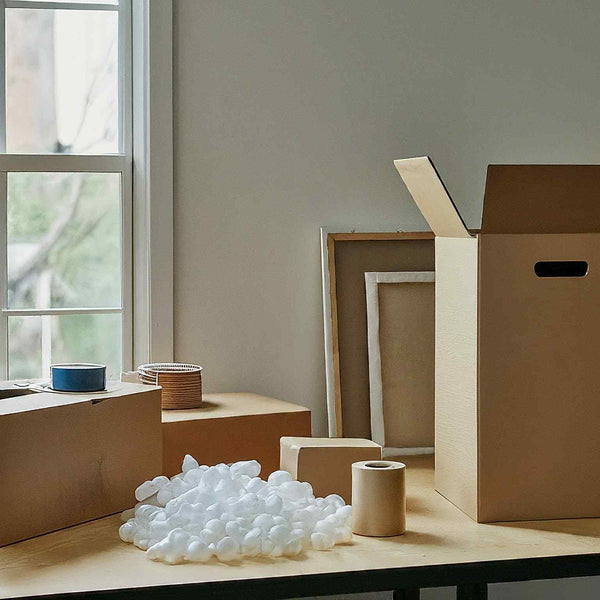
How to Ship Artwork Safely: 7 Easy Steps
Shipping artwork, whether a delicate painting or a large, intricate sculpture, requires careful planning and execution to ensure it arrives at its destination safely. By following these seven easy steps, you can protect your precious cargo through every stage of its journey.
Choose the Right Packaging Materials
The first step in learning how to ship artwork safely involves selecting the appropriate protective packaging materials. Start with acid-free paper or glassine to wrap the artwork, protecting it from scratches and moisture. Bubble wrap and foam board or padding provide additional cushioning.
Corner protectors are a must for framed pieces to safeguard the edges and corners. Use corrugated cardboard boxes for most artworks, and consider custom crates for exceptionally valuable or fragile items.
Packing peanuts or loose fill can fill gaps, ensuring the artwork doesn't move during transit. Stretch film can keep everything tight and secure, while custom tissue paper by Arka adds a professional touch, keeping the artwork safe and stylishly packaged.
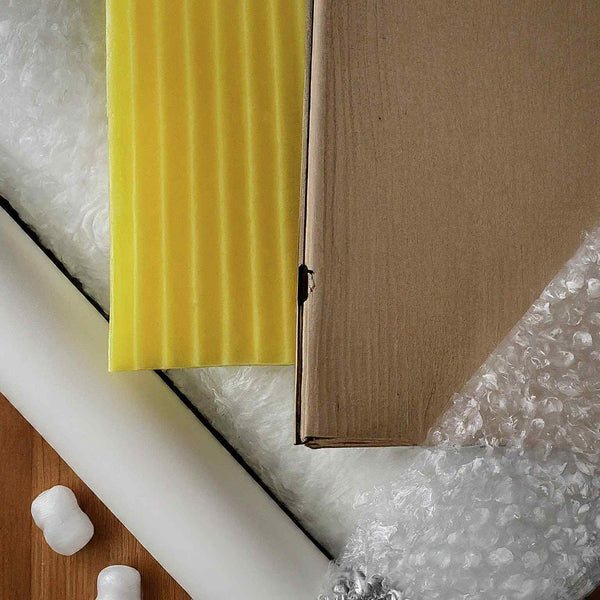
Select the Right Shipping Box
The custom boxes or containers you choose are critical for securely shipping a painting. Arka's custom shipping boxes are an excellent choice, designed to fit your artwork precisely. A custom-built crate provides the best protection for unique or extremely fragile artworks.
Telescoping boxes work well for framed pieces, offering adjustable size options, while flat boxes are ideal for unframed artworks. Ensure the box is slightly larger than the artwork to accommodate padding materials without squeezing the piece.
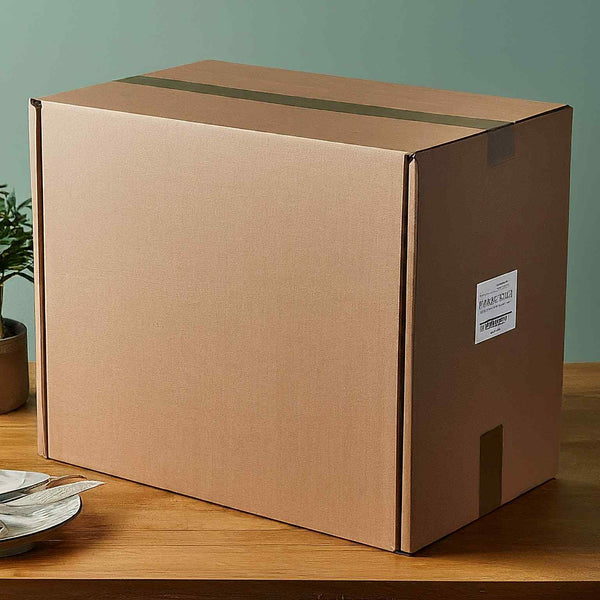
Securely Packaging Artwork
Handling the artwork with care is important during packaging. Employ layering and cushioning techniques to protect the piece from impact. Secure the artwork within the container using padding around all sides, and ensure the outer container is also secured and won’t open during shipping. This process is crucial for understanding how to pack artwork for shipping, as it minimizes movement and prevents damage.
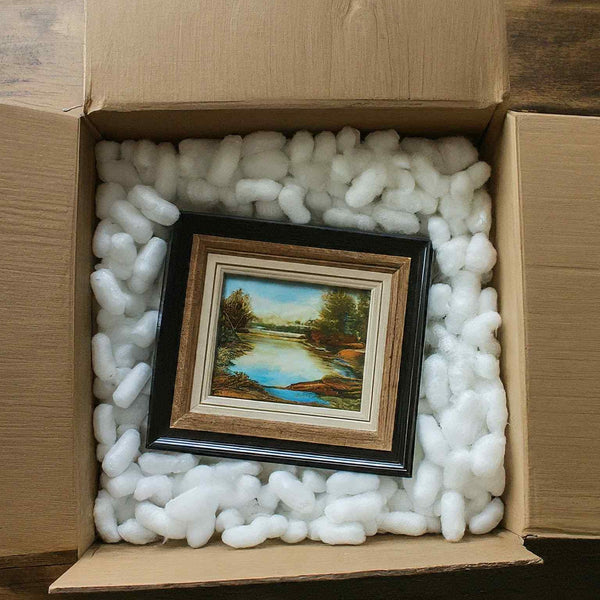
Seal and Label the Package
Once your artwork is safely packed, sealing the package securely is next. Use strong packing tape for closure, covering all seams and edges. Clear labeling is crucial; mark the package with the recipient's information, the sender's information, and any necessary shipping and handling instructions, and packaging symbols such as "Fragile" or "Handle with Care."
Don't forget to include the correct postage and customs forms for international shipping. Arka’s custom stickers and packing tape can add a professional touch and ensure that your package stands out, making it easier for handlers to spot and respect the contents' fragility.
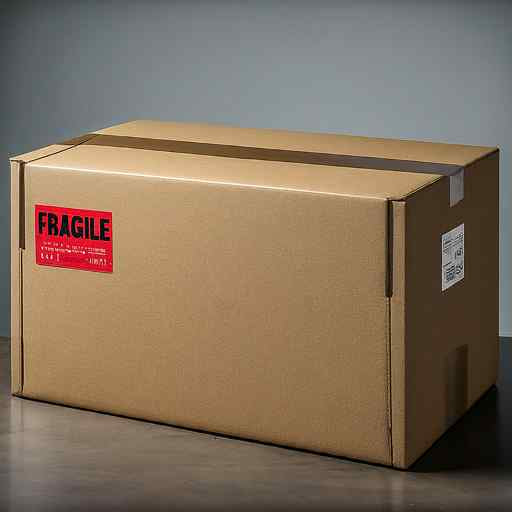
Select a Reliable Shipping Carrier
Choosing a reliable shipping carrier is essential for understanding how to ship a large painting or any artwork safely. Compare postal services and private courier options, considering their track records with fragile items. Cost is also a significant factor, with most carriers offering weight-based pricing. Select a service that balances affordability with the safety and speed of delivery.
Consider Shipping Insurance Options
Insurance offers peace of mind, so understanding the terms and conditions and choosing the right amount of coverage is essential. Shipping insurance can protect against loss or damage, ensuring you or the recipient are compensated if something goes wrong. Review the insurance options carefully, considering the artwork's value and any specific risks associated with its transit.
Tracking and Monitoring
Staying informed of your shipment’s status allows you to anticipate any delays or issues. Utilize online tracking tools provided by the carrier, and inform your customer of the tracking number so they can monitor the delivery's progress. Carrier-specific platforms offer detailed insights, helping both the sender and recipient stay updated.
How to Ship Artworks Internationally
When shipping artwork internationally, additional considerations come into play. Beyond the packaging and carrier selection, be mindful of customs regulations and international shipping laws. Proper documentation, including detailed descriptions and valuations, will help ensure a smooth customs process.
Consider the destination country's climate and handling standards, adjusting your packaging and shipping choices accordingly to protect your artwork across longer distances and through various environments.
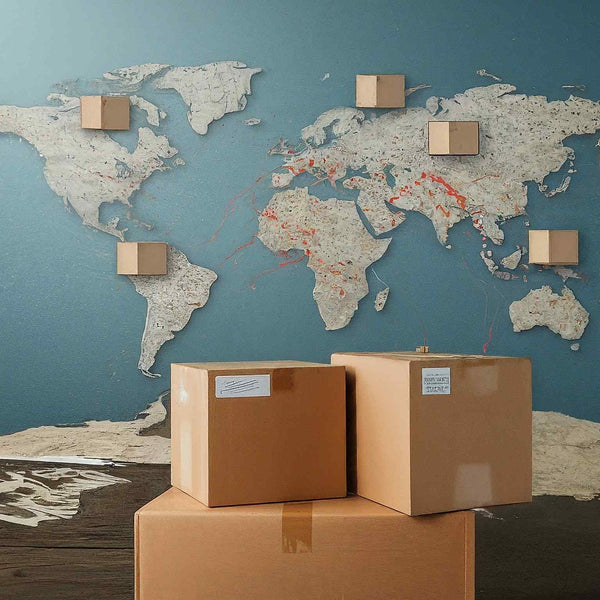
The Best Shipping Methods for Art: 6 Tips
Shipping artwork safely requires careful consideration and planning. Whether you're an artist sending your creation to a gallery or a collector shipping a cherished piece, following these steps will ensure your artwork arrives in perfect condition.
How to Ship Large and Heavy Artworks
Choose robust packaging: Use strong, double-walled cardboard boxes or custom crates for large paintings.
Secure with padding: Wrap the artwork in bubble wrap, securing it with packing tape, and ensure it's snugly fitted inside the box/crate with foam or padding to avoid movement.
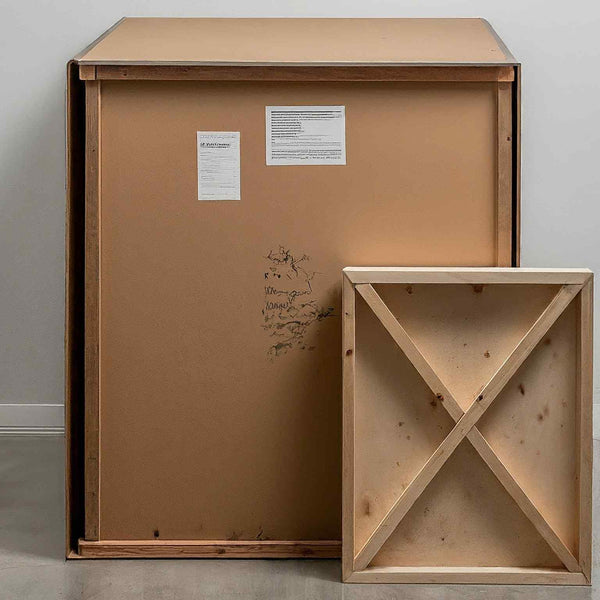
Shipping Methods for Flat and Lightweight Art
Use flat mailers: Ideal for prints and photographs. Add a rigid board to prevent bending.
Sandwich between cardboard: For extra protection, sandwich the artwork between two cardboard pieces.
Shipping Methods for Fragile Artworks
Double box: Place the artwork in a box, then put that box inside another larger box with padding in between.
Fragile labeling: Label the package as fragile to ensure careful handling.
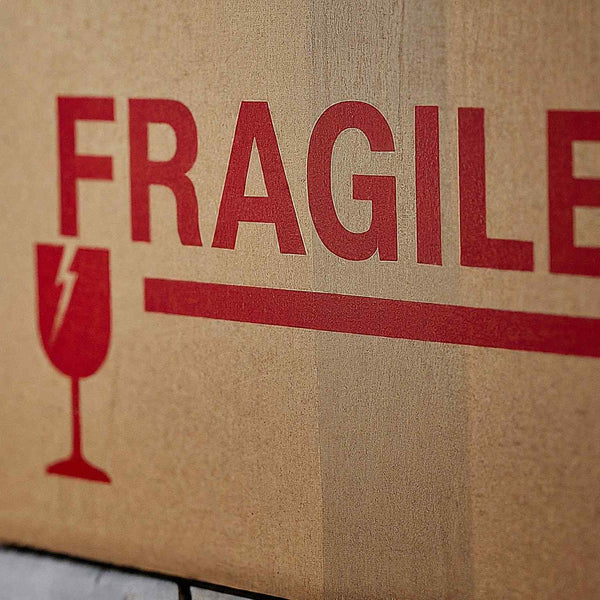
Shipping Methods for Flexible Artworks
Roll and tube: For unframed canvas or posters, roll the artwork around a sturdy tube and place it in a larger tube lined with padding.
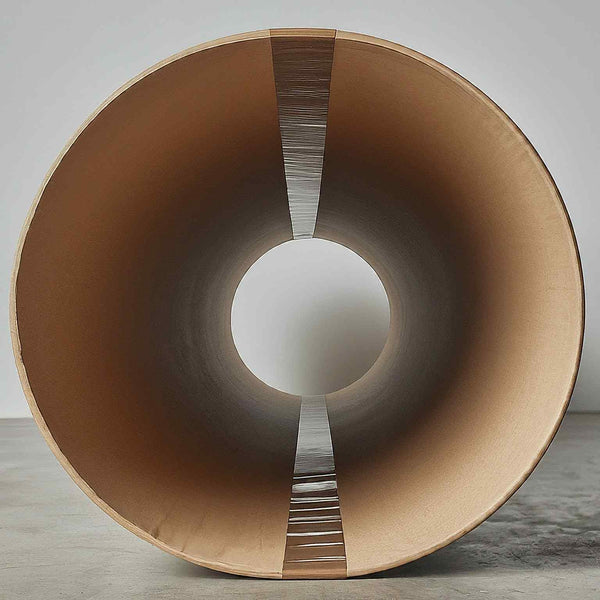
How to Limit Light Damage while Shipping Art
Wrap in acid-free paper: Cover the artwork in acid-free paper before bubble wrapping to protect against light damage.
Avoid direct sunlight: Store and transport in a way that minimizes exposure to direct sunlight.
Waterproofing Techniques for Art Shipping
Plastic wrap or bags: Seal the artwork in plastic wrap or a bag before padding to protect against water damage.
Seal seams: Use strong tape to seal all seams and edges of the packaging to prevent water ingress.
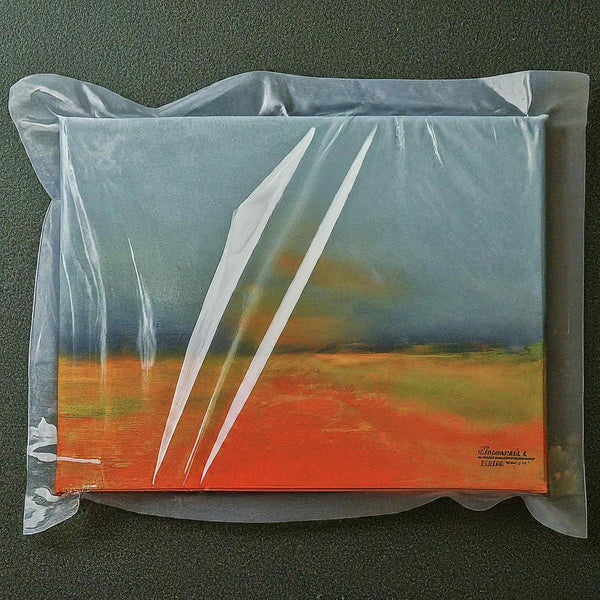
Shipping Solutions by Artwork Type
Here’s a straightforward guide to confidently shipping various types of artwork.
How to Ship Paintings
Shipping paintings requires careful handling and packaging to protect against scratches, moisture, and impacts. Use acid-free paper to wrap the painting, secure it with bubble wrap, and place it in a sturdy cardboard box or a custom wooden crate for extra protection. Consider using corner protectors to safeguard the frame and glass, if applicable.
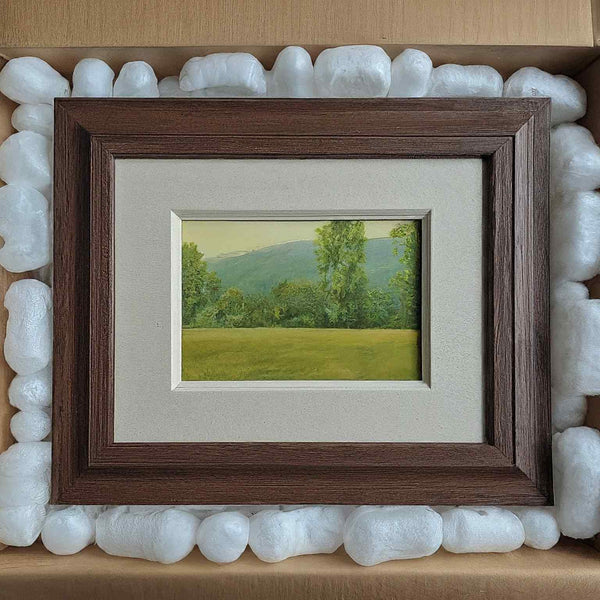
How to Ship a Canvas Painting
Canvas paintings, along with textile and collage artworks, demand extra attention due to their unique materials and textures. Roll them around a sturdy tube covered in glassine paper for canvas and textile art to prevent sticking and damage. For collage artworks, which may feature varied materials, a flat packaging method with layers of bubble wrap and a rigid board on either side for support is advisable.

How to Ship Sculptures
Sculptures, depending on their size and material, might require custom crating solutions. Wrap the sculpture in bubble wrap, paying extra attention to protruding parts. Use packing peanuts or foam inside a rigid box or crate to immobilize the sculpture during transit.
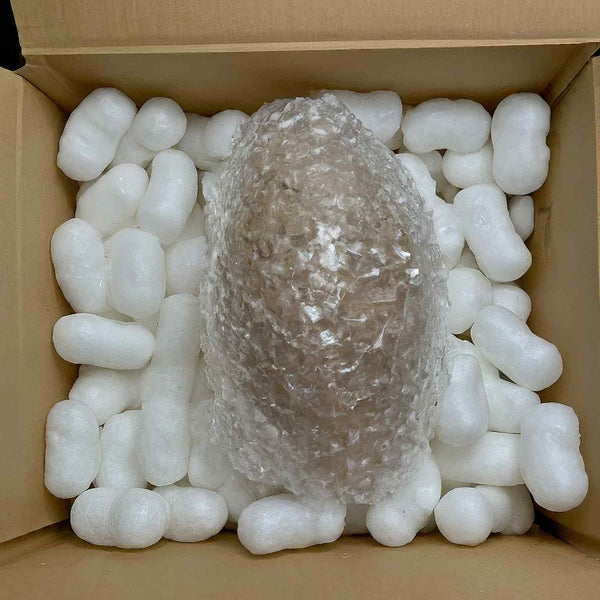
How to Ship Ceramics Artworks
Ceramic artworks are particularly vulnerable to chipping and breakage. Wrap each piece individually in bubble wrap, and secure it with tape. Place the wrapped items in a custom mailer box with ample biodegradable packing peanuts, ensuring that the pieces do not touch each other or the box's walls.

How to Ship Mosaic Artworks
Mosaic and glass artworks require a gentle approach to avoid cracks and shattering. Wrap the artwork in bubble wrap, then sandwich it between two pieces of sturdy cardboard. Place this package in a box filled with packing peanuts or foam for added safety. This method also applies well to shipping glass artwork, as it minimizes movement and buffers against shocks.
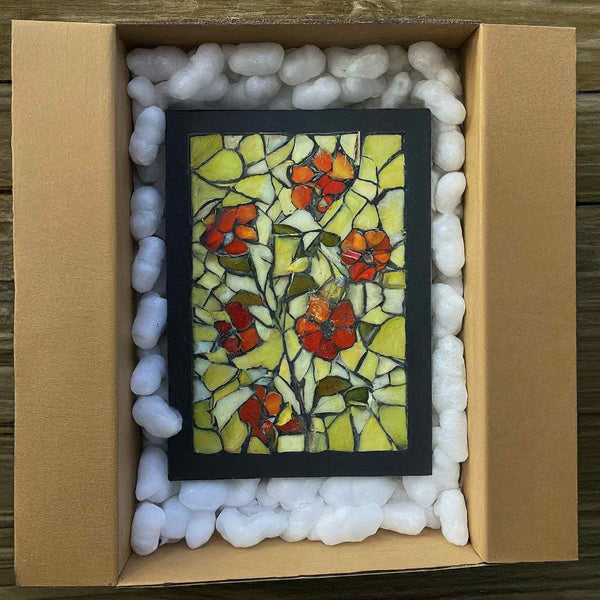
How to Ship Photography Artworks
Photography, whether framed or unframed, needs protection from scratches and bending. Place the photograph between two pieces of cardboard larger than the photo itself. For extra protection, especially for framed photos, wrap the cardboard-encased photo in bubble wrap before placing it into the shipping box.
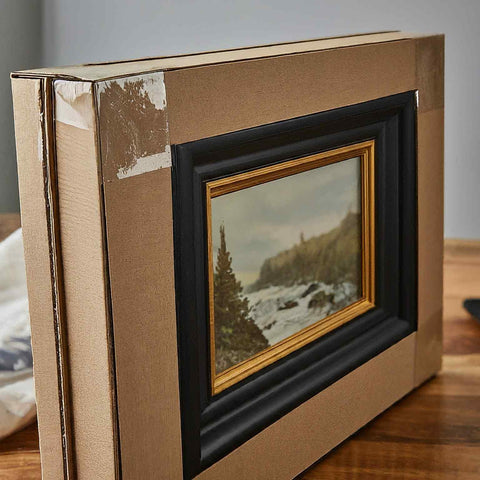
How Much Does it Cost to Ship a Painting?
Shipping artwork can vary in cost, depending on several factors such as size, weight, distance, and shipping options. When pondering the question, how much does it cost to Ship a painting? it's essential to consider these variables. Generally, prices can range from as low as $50 to upwards of $500 for international or oversized shipments.
To get a precise estimate, measuring your painting and deciding on the level of protection it requires is advisable. For instance, extra padding and a sturdy box can add to the shipping cost but are vital for the artwork's safety. Insurance is another critical factor affecting the total cost, providing the sender and recipient peace of mind.
Final Thoughts
Shipping artwork safely requires careful planning and consideration of factors such as packaging, insurance, and the choice of shipping carrier. Investing in proper packing materials, opting for insurance coverage, and selecting a reputable shipping service can ensure your precious artwork's safe transit and delivery.
Remember, knowing your art arrives intact, the peace of mind is well worth the effort and cost involved. We can assist in these endeavors by offering customized packaging solutions that ensure the artwork's protection during transit, ultimately facilitating a secure and successful delivery.
